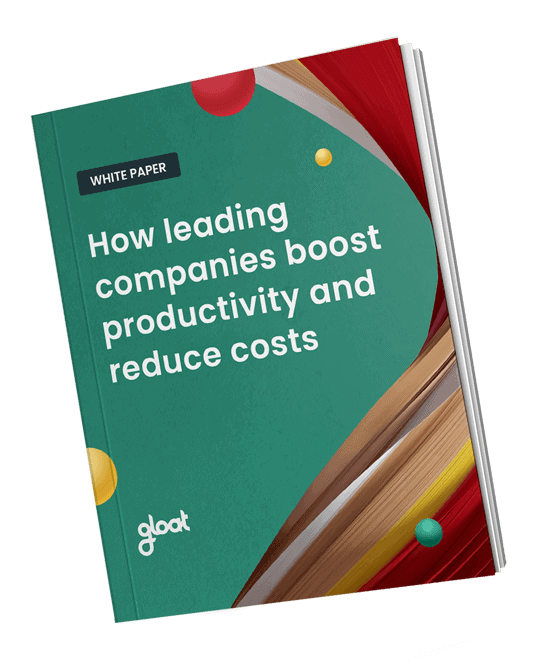Why maximizing agility requires rethinking your organizational structure
Differentiate your business with more dynamic ways of working Agility has been in the spotlight since the onset of the COVID-19 pandemic. As the crisis unfolded, it became evidently clear that the businesses best equipped to overcome near-constant disruption weren’t the biggest or the most established—they were the most agile. That’s not going to change

Differentiate your business with more dynamic ways of working
Agility has been in the spotlight since the onset of the COVID-19 pandemic. As the crisis unfolded, it became evidently clear that the businesses best equipped to overcome near-constant disruption weren’t the biggest or the most established—they were the most agile.
That’s not going to change in the new world of work. Embracing more dynamic ways of working will be even more critical now that there’s the potential for an economic downturn on the horizon. Leaders can’t be afraid to think outside of the box if they want their organizations to keep up with the accelerated pace of change on a tightened budget. That means it’s time to start reassessing traditional operating structures, reallocating talent, and equipping your people with the tools they need to achieve their full potential.
By now, most leaders recognize the importance of unlocking workforce agility with more than half of CEOs emphasizing the need to “aggressively pursue” operational agility and flexibility over the next two to three years. Yet, there’s still a lot of uncertainty about the structural changes that must take place to fuel more dynamic ways of working.
The benefits of workforce agility
It’s no coincidence that so many CEOs have pushed agility to the top of their priority lists. Embracing more dynamic ways of working offers several decisive benefits including:
Improving engagement and retention rates
Project and gig work is part of every agile organization’s DNA. This taskified approach to breaking down work doesn’t just accelerate response times; it’s also a major win for employee engagement. When workers are encouraged to take on new projects that align with their interests and ambitions, they will be more likely to grow their careers with your business, rather than outside of it. Ultimately, a boost in retention will translate into significant savings, as a Deloitte study found that it takes roughly two years for an external hire to gain the same level of insight into an organization that an internal hire has.
Enhancing productivity and accelerating timelines
When it comes to rapid response times, agile organizations always have an edge. Once work is deconstructed into projects and tasks, redeploying talent to meet emerging priorities becomes seamless. In contrast, rigid hierarchies often create information silos, which lead to delayed reactions and inefficient pivots.
More innovative ideas
The most groundbreaking ideas rarely come from organizations that are committed to sticking to the status quo. Instead, stepping away from hierarchies and embracing flatter, networked teams paves the way for innovation by encouraging all employees to share their ideas and contribute to projects directly.
By removing vertical operating structures and top-down workflows, agile organizations embrace game-changing suggestions from anywhere in the company. As a result, these visionary businesses rank first in driving innovation amongst peers, according to McKinsey research.
How does organizational structure impact workforce agility?
Given all the advantages agile enterprises reap, it’s easy to understand why so many businesses strive to adopt more dynamic ways of working. Yet, agile transformation efforts will fall short if leaders aren’t prepared to rethink the way their business is structured.
Workforce agility isn’t something that can be attained just by upgrading your systems and processes. Instead, it’s about embracing fundamental mindset shifts that will transform how your business operates. Organizations must restructure to break down jobs into tasks and gigs, place skills at the center of every initiative, and put employees at the helm of their professional development.
3 steps you can take to give your organization an agile upgrade
If you’re looking to capitalize on the advantages that workplace agility has to offer, here are a few steps you can take:
#1. Prioritize projects and gigs
The shift from jobs to tasks is already well underway. As businesses strive to unlock greater agility, organizations are increasingly breaking down traditional roles into projects and gigs. Often referred to as workforce pixelation, this task-based approach unlocks capacity and empowers employees to break out of the confines of traditional jobs to broaden their skill sets.
To make pixelated work seamless, businesses need a mechanism that enables talent and opportunities to organize fluidly, and allows for valuable workforce insights to be captured. This is where AI-powered Workforce Agility Platforms come into play. The technology matches employees to projects, gigs, and mentorships based on skills, ambitions, and capacity, and at the same time aggregates employee capabilities, interests, and talent supply and demand for intelligent workforce planning and decision making.
#2. Promote talent sharing, not talent hoarding
Within an agile enterprise, leaders don’t view talent strictly as “theirs” to control. Instead, executives understand that all employees have capabilities that their entire organization should tap into. Traditional talent scarcity beliefs are replaced with talent sharing, or the idea that employees’ skills should be put to use across the business.
This is a major mindset shift for managers, who may feel possessive of the all-star employee they rely on to get key projects across the finish line. Fortunately, the rise of talent marketplaces means talent sharing no longer needs to be a leap of faith. The platforms match employees to projects, gigs, and full-time roles based on their interests, skills, and capacity. As a result, managers can feel confident that they will be able to access the talent they need across the organization, while employees are empowered to expand their horizons.
#3. Embrace skills-based strategies
To maximize agility, enterprises must restructure how their organizations are structured to put skills at the center of every initiative. These businesses have a full picture of the skills within their workforce, often through a unified skills ontology which works by taking into account the relationships between skills to skills, as well as skills to jobs. This information not only makes talent management decisions more efficient; it also enables leaders to identify skills gaps before they emerge and launch upskilling and reskilling initiatives to prepare for the future of work.
While most organizations are vying to increase agility, the only businesses that will successfully adopt more dynamic ways of working are those that embrace large-scale change





